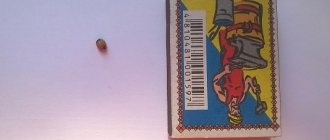Description, plant types
The taste of celery is bitter-sweet, quite unusual and unlike other vegetables, the aroma is quite spicy and strong. Literally until recently, the plant was regarded exclusively as a vegetable crop.
Today it is used as a seasoning. This interesting seasoning vegetable comes in three varieties: leaf, root, petiole.
Root is primarily grown to produce a fleshy, round root vegetable that is shaped like a large apple.
But, its leafy part is also quite suitable for eating. The aroma of the white pulp of the root vegetable is slightly reminiscent of parsley. The root part of the plant, in addition to its vitamin composition and essential oil, contains enzymes that prevent the development of cancer cells.
You can eat the root vegetable either raw or prepare various culinary delights with its addition: salads, first and meat courses, as well as delicious and healthy cutlets, the basis of which will be celery.
For those wondering whether it is possible to eat raw celery, nutritionists unanimously answer: you can and should.
How to choose celery
When choosing stems, bend them. If they spring, bend and are highly elastic, the plant has been lying on the store shelf and is about to wither, losing its value. High-quality celery does not bend, it is fragile and ready to break at any moment.
Pay attention to the greens so that they are not limp and withered. There should not be a seed arrow - it indicates stiffness of the stems and poor taste.
When choosing a root, tap it. The ringing sound indicates that there is emptiness inside it. Then press on the root vegetable from all sides - it should be dense and hard.
How to store?
It is better to store stems and leaves in the refrigerator (until they wilt) or in the freezer (up to 1 year). For freezing, they are placed in plastic containers or plastic bags. In this case, the leaves are not separated from the stems, so their life is significantly extended. Greens can be chopped and dried, stored in paper bags and added to dietary dishes as a seasoning. But you shouldn’t salt them - at least for those who decide to lose weight (salt blocks the diuretic effect of the plant and adds calories to it).
How to eat celery raw
Immediately before eating, the root part is washed well under running water at room temperature. At the same time, using the edge of a well-sharpened knife, remove the skin from the root.
When cutting a vegetable, sprinkle it with a small amount of fresh lemon juice from time to time. This procedure will help avoid darkening of the product.
Fresh lemon juice can be replaced with water with a little salt added.
Contraindications for use
Even healthy vegetables have contraindications for consumption, and celery is no exception.
- Doctors recommend refraining from adding this vegetable to dishes for gastritis and ulcers.
- People who have kidney stones know that eating celery will cause them to move.
- This plant promotes the secretion of gastric juice, so you should forget about it if you have increased stomach acidity.
- Hemorrhoids are a contraindication to eating root vegetables, as well as during pregnancy and lactation. In the third trimester, it is dangerous due to the fact that it contains substances that cause uterine contractions.
- Eat celery with caution if you have varicose veins.
How to eat celery root for weight loss
For those who want to lose weight, nutritionists advise eating a root vegetable once a day, prepared as follows: the washed and peeled root is grated on the finest grater and without delay, before the product begins to darken, mix it with a certain amount of sour milk.
If desired, you can add a small amount of chopped walnuts, a few parsley leaves and a little garlic passed through a chopper to the resulting slurry.
The dish will turn out healthy and tasty, and most importantly, without adding any chemical ingredients.
Chemical composition
A popular vegetable for lovers of healthy eating, it is literally overflowing with biologically active elements.
Amount of nutrients per 100 g of product | |
| Vitamins | |
| Riboflavin | 0.1 mg |
| Kholin | 6.1 mg |
| Retinol | 750 mcg |
| Niacin | 0.4 mg |
| Phylloquinone | 29.3 mcg |
| Alpha tocopherol | 0.5 mg |
| Pantothenic acid | 0.246 mg |
| Ascorbic acid | 38 mg |
| Macronutrients | |
| Potassium | 430 mg |
| Magnesium | 50 mg |
| Sodium | 200 mg |
| Phosphorus | 77 mg |
| Calcium | 72 mg |
| Microelements | |
| Iron | 1.3 mg |
| Aluminum | 129.8 mcg |
| Manganese | 0.103 mg |
| Zinc | 0.13 mg |
| Copper | 35 mcg |
| BJU | |
| Squirrels | 0.9 g |
| Fats | 0.1 g |
| Carbohydrates | 2.1 g |
| Calorie content | 13 calories |
In addition to the nutrients listed in the table, celery contains amino acids that are beneficial for the body:
- valine;
- tryptophan;
- lysine;
- threonine;
- aspartic acid;
- isoleucine, etc.
The product can be eaten by people suffering from diabetes. The glycemic index is different in different parts of the vegetable:
- in leaves – 15;
- in petioles – 32;
- at the root – 35 (when cooked the figure increases to 85).
Regular use of the product enriches the body with creatine. This substance is necessary for those who engage in physical activity. It promotes rapid recovery after a significant expenditure of energy and increases endurance.
How to eat celery
If you want to use the product boiled or stewed, it is worth remembering the following: the finer it is crushed, the more aromatic the prepared dish will be.
In order to preserve the maximum amount of vitamins during cooking, the vegetable seasoning must be immersed exclusively in boiling water and during cooking, the container must be tightly covered with a lid.
The petiole variety is also called salad. The variety differs from others in its thicker and fleshier stems, the thickness of which reaches 4 cm, as well as the absence of root crops.
Celery in dietetics
Dishes with celery are perfectly digestible and stimulate metabolism, as it can get rid of excess cholesterol, lower blood sugar, remove excess fluid, it helps get rid of congestion, remove swelling, normalize blood pressure, and stabilize hemoglobin.
Celery is commonly promoted as a negative calorie food because it has high water and fiber content.
According to the Academy of Nutrition and Dietetics, the human body burns about 10% of its daily calories through thermogenesis, which involves chewing and digesting food and storing its nutrients.
In theory, negative calorie foods are foods for which more energy is expended in their digestion and assimilation than is consumed, resulting in an energy deficiency. Typically, negative calorie foods are those that are high in water and fiber and low in fat.
However, a 2021 study, which has not yet been peer-reviewed, concluded that celery is not a negative calorie food.
Lizards that ate celery used 33% of the food's calories for digestion, while 43% of the calories were lost through feces and urine. The lizards absorbed about 24% of their calories from the celery they ate.
Study
: Negative calorie foods: An empirical examination of what is fact or fiction | bioRxiv
How to eat celery stalks
The stems can be eaten either raw or stewed, for example with meat products or other favorite vegetables. In addition, they can be pickled and salted.
Juicy and soft stems fit perfectly as an additional ingredient into almost any salad. To taste, they will go well with seafood, apples and all the ingredients included in vegetable stew.
In dried form, the product is used mainly as a seasoning. For example, for preparing homemade mayonnaise or various sauces, for adding a special taste and aroma when preparing egg dishes, when preparing any grilled dishes, as well as for creating dry spicy mixtures.
Damage to celery root
If you eat more than 200 grams of celery per day, then this product can cause trouble. Excessive amounts of root often cause stomach upset and other unpleasant consequences. The harm of celery root to the body is recorded in the following cases:
- personal intolerance to the plant;
- menstruation period (increases bleeding);
- stomach ulcer, gastritis;
- pregnancy, lactation (the child may have an allergic reaction).
Can you eat celery leaves?
For eating the leaves of the plant, a variety called leafy is suitable. Visually, the leaves of this variety resemble parsley leaves, but the celery greens are much more lush, and the aroma is more refined and spicy.
The leafy part can be used salted, fresh, or dried. Spicy greens will add a special tart flavor and exquisite aroma to all kinds of vegetable dishes.
Greens are also placed in containers when salting or pickling any vegetables.
Composition of celery
Celery root is considered a delicate root vegetable with a pleasant aroma. The aroma that it exudes is determined by the composition of the vegetable, because it contains essential oils. Some people think that celery is a spice because its smell is stronger than parsley, but weaker than black radish.
This food product is good because both its stems and leaves are useful. However, the most useful in terms of chemical composition and properties is the root of the vegetable. It is used for cooking and in the fight against certain diseases.
One hundred grams of peeled celery tuber is 34 kcal. The vegetable contains:
- water;
- alimentary fiber;
- fatty acid;
- and organic matter.
In addition, it contains a lot of vitamins and minerals. Thanks to this, celery helps rejuvenate, heal the body and cleanse the body of toxins. Regular consumption of root vegetables has a positive effect on health and appearance.
Beneficial features
The benefits of celery can be listed for quite a long time.
The following can be added to the above:
- With regular use, even in small quantities, you can significantly slow down the aging process of the skin and almost all internal organs.
- its unique combination of components (proteins, amino acids, vitamins, minerals) fully provides everything necessary for normal growth and cell division
- Celery tops are often used to eliminate the effects of overwork and nervous disorders.
- stimulation of the secretion of gastric juice can be done using essential oil, which is found in large quantities in the stem and root system of the plant.
For those who are wondering what part of celery can be eaten, the answer is: any.
A diet where the main component is celery is especially suitable for those who suffer from:
- from excess weight,
- allergic rashes and manifestations,
- colds,
- problems with the thyroid gland.
The duration of a diet of this kind can last a maximum of two weeks.
The main dish of her diet is soup, for the preparation of which you will need the following ingredients:
- a good bunch of celery
- cabbage
- 5 medium onions
- 3 small tomatoes
- salad pepper
- spices to taste.
All ingredients are crushed and cut as desired, placed in a container of a suitable size and filled with approximately three liters of water. Place the container on the stove and cook for 15 minutes.
During two diet weeks, soup can be eaten in unlimited quantities. In addition to the main dish, during this period you can eat: fruits, but only in the first half of the day, various vegetables, white boiled chicken or boiled beef.
Dietitians strongly recommend: before going on a diet where the main product is celery, you should definitely visit your doctor and consult with him on this issue.
For those suffering from ulcers, gastritis and other diseases of the gastrointestinal tract, a diet of this kind is strictly contraindicated.
Losing weight with celery
The vegetable is called an ideal product for fighting extra pounds. It has low calorie content and has a beneficial effect on the body. There are several diets whose main product is celery.
It is valuable for weight loss because when consumed, a person receives energy and a small amount of calories. In addition, its calorie content is negative. This means that celery provides the body with fewer calories than it takes to absorb.
You can use vegetables for weight loss in different variations. Celery root is meaty and juicy, so it is suitable for baking or boiling. The stem is eaten fried, stewed or raw. Since the leaves of the plant have a rich aroma, they serve as seasonings for soups and salads. A dish with celery fills you up and eliminates the feeling of hunger for a long time.
Those who want to quickly lose extra pounds can add celery juice to their diet menu. This is a laxative and diuretic that helps the body get rid of toxins and normalizes metabolism.
Drink celery root juice daily before meals, two teaspoons three times a day. Honey is added to the juice for sweetness - this reduces the feeling of hunger and improves digestion.











